Wharfage charges are a fundamental yet often overlooked component of international trade costs. These fees play a critical role in maintaining the seamless flow of maritime commerce.
This post will get into the intricacies of wharfage charges, providing you with a comprehensive understanding of how to navigate the world of maritime trade with confidence and clarity.
What are Wharfage Charges?
Wharfage charges are fees port authorities assess for using a wharf or dock to load or unload cargo from ships. These charges cover the costs associated with the infrastructure and maintenance of the port facilities, ensuring efficient and safe handling of goods during the maritime shipping process.
Wharfage charges are typically calculated based on the weight or volume of the cargo and are a crucial component of overall shipping costs in international trade.
What’s Included and Excluded in Wharfage Charges?
Essentially, wharfage charges are distinct from other port expenses. While they grant access to the wharf itself, they don’t encompass services like inspecting, meticulously sorting, or painstakingly weighing your cargo. These tasks often come with separate fees.
Wharfage: A Global Phenomenon
Across the globe, wharfage charges play a pivotal role. In many countries, you might encounter them under the moniker “Cargo Dues” or “CD.” Regardless of the name, their importance remains constant – they contribute significantly to the smooth operation of maritime trade, ensuring ports have the resources to maintain their infrastructure and keep global supply chains humming.
According to a report by UNCTAD, wharfage charges can account for a significant portion of overall port costs, impacting everything from shipping routes to final product pricing.
Importance of Wharfage in Maritime Trade:
1. Infrastructure Maintenance and Development: Wharfage fees contribute to the upkeep and improvement of port infrastructure. These funds ensure that the facilities are maintained in optimal condition, supporting efficient and safe handling of goods.
2. Operational Efficiency: The revenue generated from wharfage is essential for the smooth operation of ports. It helps manage the logistical aspects of cargo handling, including the allocation of berths, scheduling of ships, and coordination of labor.
3. Economic Contribution: By financing port operations, wharfage charges support the broader economic activities linked to maritime trade. Efficient ports facilitate faster turnaround times for ships, reducing costs and boosting trade volumes.
4. Cost Recovery: Port authorities incur significant expenses for docking services, facility maintenance, and safety measures. Wharfage fees allow these costs to be recouped, ensuring the financial viability of port operations.
5. Regulatory Compliance: Collecting wharfage charges ensures that ports comply with national and international maritime regulations. This compliance is crucial for maintaining safety, security, and environmental protection standards.
Understanding the role of wharfage, or Cargo Dues, highlights its significance in sustaining the global maritime trade ecosystem. It is a fundamental element that ensures ports can operate efficiently, maintain high standards, and continue to facilitate the smooth flow of international commerce.
Also Read: Common Types and Sizes of Shipping Containers
The Fundamentals of Wharfage Charges
Now that we’ve established the essence of wharfage charges, let’s try to understand how these fees are calculated.
The Infrastructure Advantage: What You Pay For
Remember those impressive wharves – the sturdy platforms that hug the shoreline? Wharfage charges go towards maintaining and upgrading this vital infrastructure. It’s not just about the concrete expanse; the fee also encompasses using associated equipment that streamlines the loading and unloading process. Think of it as an investment in efficiency, ensuring your cargo gets on (or off) the ship swiftly and securely.
List of Tailored Tariffs
Several factors are combined to create a customized wharfage charge for your specific shipment. Here are the key elements:
- Vessel’s Vital Statistics: The size and type of vessel play a starring role. A colossal container ship will incur a higher charge than a nimble fishing boat. After all, it requires more space and resources to accommodate a maritime giant.
- Cargo Chronicles: Quantity and Type The quantity and cargo you ship also influence the cost. Bulk cargo like grain will likely have a different rate than delicate electronics. It’s all about the resources required to handle your specific goods efficiently.
One crucial point to remember: wharfage charges are not solely applicable to ports with traditional wharves. These fees also extend to ports that utilize quays (walled structures) or berths (designated mooring areas). The underlying principle remains the same – you’re paying for the privilege of using port facilities for cargo movement.
Wharfage Charges at Port of Origin or Destination
Don’t be surprised if you encounter wharfage charges at both the port of origin (where your goods are loaded) and the port of destination (where they’re unloaded).
It’s a standard practice globally, ensuring a fair contribution to port maintenance and efficiency at each crucial touchpoint in your international trade journey.
In the next chapter, we’ll explore the calculation of wharfage charges, special considerations, and factors on which the charges depend.
Also Read: What is Demurrage? Practical Tips to Avoid Demurrage Fees in Cross-Border Shipping
Calculation of Wharfage Charges
Now that we’ve grasped the factors influencing wharfage charges, let’s tackle the fundamental puzzle – how are these fees calculated?
Understanding the Revenue Tons
At the heart of calculating wharfage charges lies the concept of the revenue ton. This ingenious unit acts as a benchmark, considering the more significant measure between a cargo’s weight (measured in metric tonnes) and its volume (measured in cubic meters).
Consider a shipment of oversized pillows – they might be light but take up a lot of space. The revenue ton ensures a fair assessment using the more significant measurement for cost calculation.
Understanding Your Invoice Intrigue
Wharfage charges might not always be explicitly displayed on your invoice. Fear not! These fees are typically incorporated into shipping lines’ overall terminal handling charges (THC) levied.
So, while you might not see a separate line item for wharfage, rest assured it’s contributing to the overall cost. Port authorities, on the other hand, typically establish wharfage rates annually, ensuring a structured approach to cost management.
Special Cargo Considerations
The specific type of cargo you’re shipping also plays a role in the calculation. Here’s a breakdown of some common categories:
- General Cargo: This category encompasses various non-containerized goods, and wharfage charges are usually determined by weight or volume.
- Containerized Cargo: Wharfage charges are often based on the container size (e.g., 20-foot or 40-foot container) for these neatly packed goods.
- Bulk Cargo: Large quantities of loose cargo, such as grain or coal, typically have specialized wharfage rates, often calculated per metric ton.
- Ro-Ro (Roll-on/Roll-off) Cargo: Vehicles that drive on and off the ship (like cars) might have unique wharfage charges based on the vehicle type or length.
Different Types of Wharfage Charge
Our exploration of wharfage charges continues! Now that we’ve mastered the calculation methods, let’s learn about specific charge types.
Much like sorting cargo into containers, wharfage charges can be neatly categorized into four main types, each catering to distinct cargo characteristics:
- General Wharfage: This is the workhorse of wharfage charges, applicable to non-containerized or bulk cargo. Think of it as the “catch-all” category for goods that don’t neatly fit into standardized containers or specialized methods like Ro-Ro. Here, charges are typically determined by weight or volume, ensuring a fair assessment for irregularly shaped or sized cargo.
- Container Wharfage: For the legions of standardized shipping containers that crisscross the globe, container wharfage charges come into play. These fees are often based on the container size, with common examples being 20-foot or 40-foot container rates. The standardized nature of containers allows for streamlined pricing structures.
- Bulk Cargo Wharfage: When dealing with massive quantities of loose cargo like grain, coal, or iron ore, bulk cargo wharfage charges take center stage. Here, the pricing structure often deviates from weight or volume and might be calculated per metric ton, reflecting the unique handling requirements of these colossal shipments.
- Ro-Ro Wharfage: Have you ever wondered how cars and other wheeled cargo seamlessly board and disembark ships? Ro-Ro (Roll-on/Roll-off) wharfage charges facilitate this efficient process. These fees are often tailored to the specific type or length of the vehicle using the Ro-Ro facilities, ensuring a fair cost structure for this specialized cargo movement method.
Understanding these different wharfage charge types empowers you to anticipate costs and make informed decisions when shipping diverse cargo internationally.
Also Read: Top Freight Forwarding Companies in 2024
The Wharfage Responsibility: Who Pays What and When?
We’ve navigated the intricacies of wharfage charges – their calculation methods and fascinating variations. But a crucial question remains: who pays the bill? Let’s find out.
Incoterms and Wharfage: Who’s Responsible?
Imagine a relay race, but instead of runners, we have incoterms –the internationally recognized terms of sale that govern the responsibilities of buyers and sellers in international trade.
Regarding wharfage charges, Incoterms act like a baton, clearly defining who (exporter or importer) is responsible for payment at each journey stage.
Decoding Incoterms: Responsibilities Defined
Here’s a breakdown of how different Incoterm categories handle wharfage responsibility:
- EXW (Ex Works): In this scenario, the buyer takes the reins from the very beginning. They’re responsible for all costs from the seller’s factory onwards, including wharfage charges at the origin port.
- FCA (Free Carrier): The responsibility baton is passed to the buyer at a designated location (often the origin terminal). This means the buyer shoulders any wharfage charges incurred there.
- FOB (Free on Board): Here, the responsibility shifts to the buyer once the goods cross the ship’s railing at the origin port. The seller typically pays any wharfage charges up to that point.
- CFR (Cost and Freight): The seller takes care of the cost of carriage (including wharfage charges at the origin port) but not the risk of loss or damage once the goods are loaded onto the ship.
- CIF (Cost, Insurance, and Freight): Similar to CFR, the seller covers the cost of carriage and wharfage at the origin port, with the added benefit of insuring the goods during transit.
- DPU (Delivered at Place Unloaded): The seller assumes responsibility for all costs and risks until the goods are delivered to the designated place at the destination port. This includes wharfage charges at the destination port.
- DDP (Delivered Duty Paid): The seller takes on the ultimate responsibility, covering all costs and risks until the goods are delivered to the named place at the destination port, including any wharfage charges incurred there.
Understanding Terminal Handling Charges (THC)
Terminal Handling Charges often encompass wharfage charges levied by the port authority. So, while Incoterms dictate who is ultimately responsible for wharfage costs, the actual payment might be bundled within the THC charged by the shipping line.
It’s crucial to carefully review your shipping contract to understand how wharfage charges are incorporated.
By understanding the interplay between Incoterms and wharfage charges, you can ensure a smooth and cost-effective international trade journey. In the final chapter of our wharfage odyssey, we’ll explore strategies for optimizing your port costs, empowering you to navigate the world of maritime commerce with confidence!
Distinctions and Comparisons
We’ve conquered the complexities of wharfage charges – their calculations, variations, and payment responsibilities. But the world of port fees is vast!
Let’s embark on a final comparative journey, differentiating wharfage from other commonly encountered charges. Buckle up, intrepid explorer of international trade, as we unravel the distinctions between wharfage and its nautical cousins.
Wharfage vs. Demurrage
When a ship arrives at a port, a flurry of activity takes place to ensure the smooth loading and unloading of cargo. But these vital processes come at a cost. Two key charges that can impact both shippers and shipping lines are wharfage and demurrage.
Let’s break down the difference between these fees with a helpful table:
| Feature | Wharfage | Demurrage |
| What it is | A fee for using the port facilities | A penalty for exceeding the allotted time for loading/unloading |
| Who pays it | Typically, the cargo owner or consignee | Typically, the shipping line |
| Basis for charge | Cargo weight or volume | Time exceeding the free period |
| Analogy | Like a parking fee for occupying space | Like a parking ticket for overstaying |
Clarifying Differences between Wharfage, Dockage, and Port Charges
While wharfage charges are specifically for using the wharf, the broader term “port charges” encompasses a more comprehensive range of fees levied by the port authority.
This can include:
- Dockage: This fee allows the ship to use the actual dock itself, the submerged area where the vessel moors. In some ports, wharfage and dockage might be combined into a single charge.
- Anchorage: If a ship needs to wait at anchor before it can berth at the dock, anchorage fees might apply.
- Security: Ports often charge fees for security measures implemented to protect cargo and vessels.
- Fresh water and other services: Additional fees might be levied for services like supplying fresh water to the ship.
Wharfage vs. Arrastre: Space vs. Service
The efficient movement of goods through ports involves various fees. Two crucial charges that often come up are wharfage and arrastre. While they both contribute to port operations, they address distinct aspects:
| Feature | Wharfage | Arrastre |
| Focus | Space for cargo handling | Services for cargo handling |
| What it covers | Fee for using the wharf for cargo movement | Fee for labor and management of cargo |
| Analogy | Like a parking fee for occupying space | Like paying for a moving service within a building |
| Who typically pays | Cargo owner or consignee | Shipping line or consignee (depending on agreement) |
By understanding these distinctions, you can confidently navigate the world of port fees, ensuring a smooth and cost-effective international trade journey. Now, go forth, intrepid explorer, and conquer the exciting world of maritime commerce!
Also Read: How to Choose the Best Freight Forwarder for FCL DDP Shipments?
Understanding Port Infrastructure and Wharfage Enforcement
We’ve untangled the complexities of these charges, from their calculation methods to who shoulders the responsibility. But ports are intricate ecosystems, and wharves are just one piece of the puzzle.
Let’s delve deeper into port infrastructure, exploring the role of other structures and how wharfage charges are enforced.
All About Port Infrastructure: Wharfs, Quays, and Jetties
Imagine a port bustling with activity. Ships maneuver gracefully, thanks to a well-orchestrated infrastructure.
Here’s how key components play their part:
- Wharves: As we now know, these sturdy platforms provide a stable base for ships to dock and facilitate cargo loading and unloading. They’re often constructed from concrete or steel piles and can accommodate various vessel sizes.
- Quays: Similar to wharves, quays are walled structures built alongside the shoreline. They offer a vertical surface for ships to moor alongside and can be ideal for certain cargo handling operations. Think of them as port walls that double as docking points.
- Jetties: These finger-like structures jut out from the shoreline. They are often used to create a calmer harbor environment or guide ships into the port. They might also house facilities for specific cargo handling needs, like loading tankers with oil.
The Modern Wharf
While traditional wharves reign supreme, modern ports are embracing innovation. Floating wharves offer a unique solution, particularly in areas with fluctuating water levels.
These ingenious platforms rise and fall with the tide, ensuring a smooth connection between ship and shore regardless of water depth.
Jetty Design: Tailored Functionality
The design of jetties varies depending on their purpose. Some are short and stubby, designed primarily for guiding vessels. Others stretch out further, creating a more sheltered harbor environment. The specific construction materials and layout are carefully considered to withstand wave action and optimize functionality.
Wharfage Enforcement at Quays and Berths
Wharfage charges are typically enforced through the port authority’s billing system. Shipping lines or cargo owners are responsible for settling these fees before their cargo can be released.
Additionally, port authorities might have designated personnel who monitor vessel activity and ensure compliance with wharfage regulations.
The Quay and Berth Connection with Wharfage Charges
Quays and berths (designated mooring areas) often come into play here. While wharfage is a space charge for using the wharf itself, dockage fees might apply specifically for using the submerged area where the ship moors alongside a quay or berth. In some ports, these charges might be combined into a single fee.
Understanding the broader port infrastructure and how wharfage charges are enforced gives you a holistic view of the maritime logistics landscape. This empowers you to navigate the world of international trade with greater confidence and efficiency.
Conclusion
Wharfage charges are a vital yet often overlooked component of international trade costs. They ensure the efficient and safe handling of goods, support port infrastructure, and facilitate smooth maritime operations.
Intoglo offers unparalleled door-to-door FCL shipping services for businesses seeking streamlined logistics solutions from India to the USA. By eliminating intermediaries, Intoglo reduces costs and accelerates delivery times, providing a seamless and efficient shipping experience.
Partner with Intoglo to navigate your international shipping needs confidently and ensure your goods reach their destination efficiently and cost-effectively. Contact Intoglo today to experience hassle-free, expedited shipping solutions.


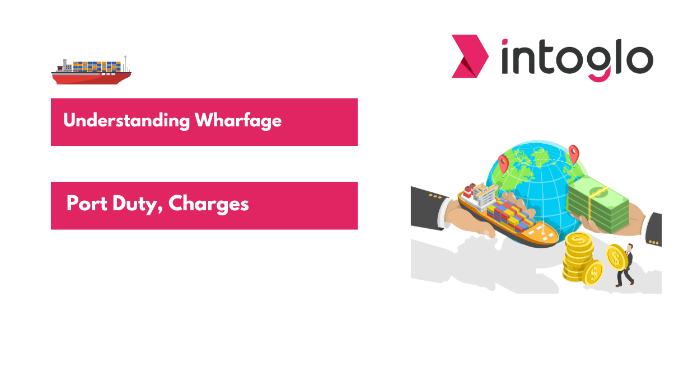

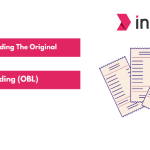
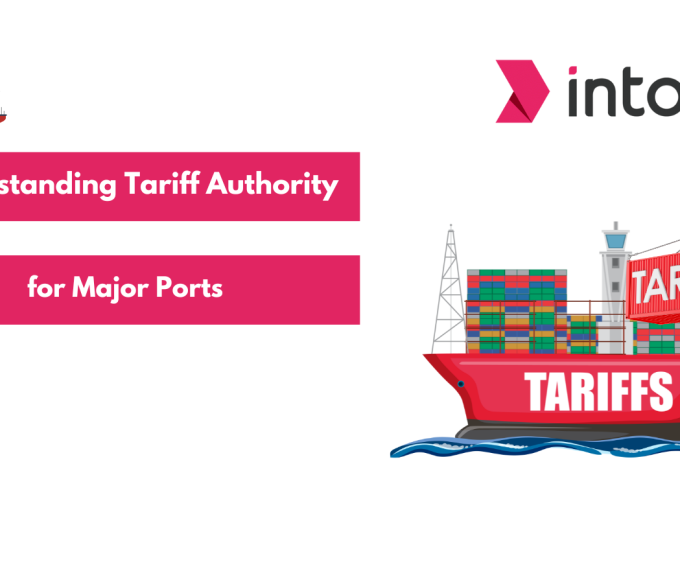
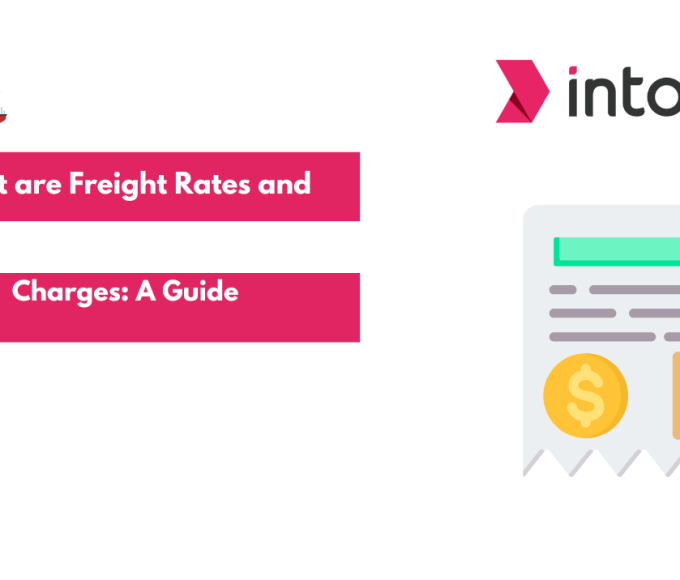
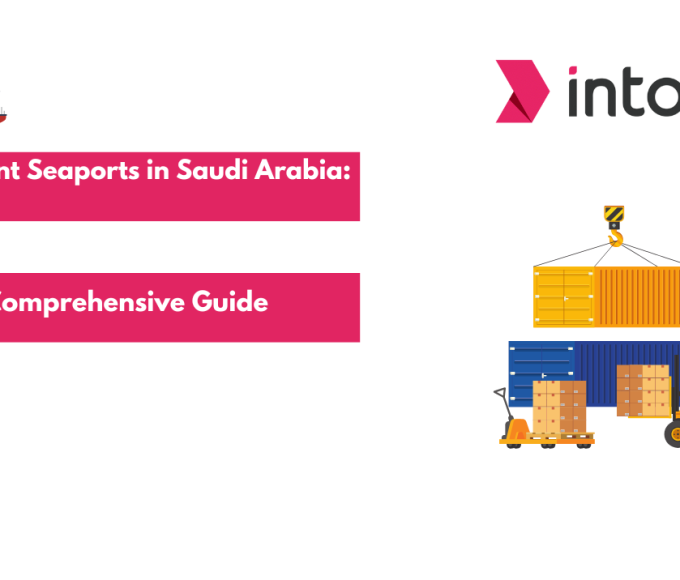
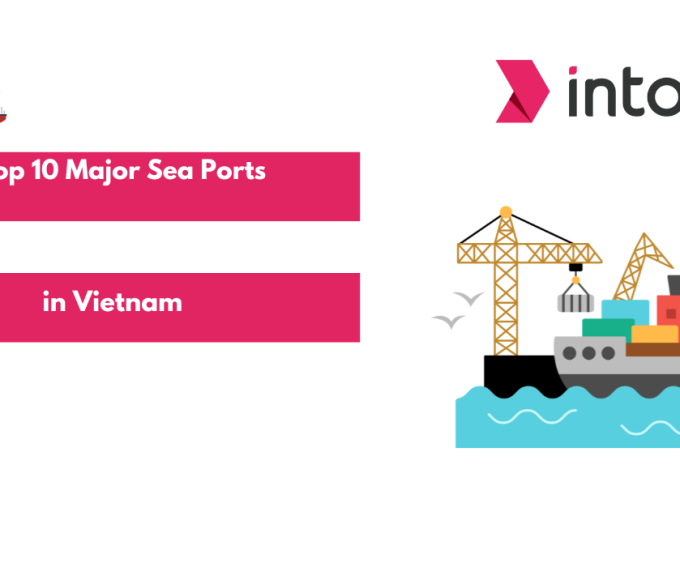
Leave a comment